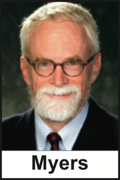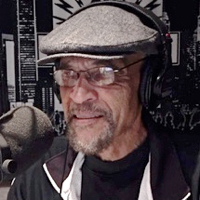Rascals case in brief
In the beginning, in 1989, more than 90 children at the Little Rascals Day Care Center in Edenton, North Carolina, accused a total of 20 adults with 429 instances of sexual abuse over a three-year period. It may have all begun with one parent’s complaint about punishment given her child.
Among the alleged perpetrators: the sheriff and mayor. But prosecutors would charge only Robin Byrum, Darlene Harris, Elizabeth “Betsy” Kelly, Robert “Bob” Kelly, Willard Scott Privott, Shelley Stone and Dawn Wilson – the Edenton 7.
Along with sodomy and beatings, allegations included a baby killed with a handgun, a child being hung upside down from a tree and being set on fire and countless other fantastic incidents involving spaceships, hot air balloons, pirate ships and trained sharks.
By the time prosecutors dropped the last charges in 1997, Little Rascals had become North Carolina’s longest and most costly criminal trial. Prosecutors kept defendants jailed in hopes at least one would turn against their supposed co-conspirators. Remarkably, none did. Another shameful record: Five defendants had to wait longer to face their accusers in court than anyone else in North Carolina history.
Between 1991 and 1997, Ofra Bikel produced three extraordinary episodes on the Little Rascals case for the PBS series “Frontline.” Although “Innocence Lost” did not deter prosecutors, it exposed their tactics and fostered nationwide skepticism and dismay.
With each passing year, the absurdity of the Little Rascals charges has become more obvious. But no admission of error has ever come from prosecutors, police, interviewers or parents. This site is devoted to the issues raised by this case.
On Facebook
Click for earlier Facebook posts archived on this site
Click to go to
Today’s random selection from the Little Rascals Day Care archives….
Click for earlier Facebook posts archived on this site
Click to go to
Today’s random selection from the Little Rascals Day Care archives….
When ‘backlash spewed,’ Judy Abbott blamed ‘falsehoods’
Oct. 19, 2012
“The backlash spewed from the guilty verdicts in the Little Rascals Day Care case have (sic) been painful and difficult to hear and live with. Those of us who advocate for the rights of children often feel that the gains made on their behalf over the past few years are eroding under falsehoods propagated by individuals who’s (sic) motives are undetermined.”
– From “Little Rascals Day Care Center Case: The Bitter Lesson, a Healthy Reminder” by Judith Steltzner Abbott (1994)
If the editors of the Journal of Child Sexual Abuse set aside six pages in hopes therapist Judy Abbott might respond thoughtfully to the Little Rascals “backlash,” they were surely disappointed. Instead, she dodged reality with platitudes and self-congratulation.
Of course, even to acknowledge the concerns of her falsehood-propagating critics (the ones with “motives undetermined”) might have put at risk her nomination for the Distinguished Women of North Carolina Award.
Professor yet to decide about McMartin case
 June 28, 2013
June 28, 2013
“Children can lie, but research shows that they do not fabricate detailed descriptions of adult sexual acts unless they have experienced or witnessed them. Studies also show that children have good memories and that even preschoolers can remember key events like sexual abuse. One problem is that repeatedly molested children have great difficulty distinguishing one act of abuse from another and linking abuse to specific dates….
“In the McMartin case, we learned… to minimize the use of leading questions during interviews…. While the verdict comes as a disappointment to the children in the case, their courage and willingness to testify for weeks on end has been a catalyst for change that will protect countless other children.”
– From Believe the Children adviser Civia Tamarkin’s interview with John E. B. Myers, professor at McGeorge School of Law, University of the Pacific, in “The McMartin Nightmare” (People magazine, Feb. 5, 1990)
As his faculty bio notes, Professor Myers has long been “one of the country’s foremost authorities on child abuse,” especially in tracing its historical context, but he seems to have been excruciatingly slow to recognize the fraudulence of “satanic ritual abuse” claims. Although he stopped short of declaring the McMartins guilty, Myers clearly stationed himself in the “child saver” camp, more sympathetic toward serial interviewer Kee MacFarlane than toward the defendants whose lives she devastated.
In a journal article five years later, Myers would acknowledge “growing skepticism regarding children’s credibility,” at the same time warning of a “real danger that the pendulum will swing too far in the direction of disbelief.”
More recently, Myers addressed McMartin in “Child Protection in America: Past, Present, and Future” (2006), crediting it with raising the standard for interviewing, but concluding that “In the final analysis, we will never know what happened at the McMartin Preschool. From the outset, the case divided people into ‘true believers’ and skeptics….”
In “The Backlash: Child Protection Under Fire” (1994) Myers had added a most curious footnote: “I have no opinion regarding the guilt or innocence of any of the McMartin defendants.” How could he – a law professor! – acknowledge the corruption of the child-witnesses’ testimony, yet doubt the defendants deserved a “not guilty” verdict?
Almost 20 years later, I wondered whether Myers might have formed an opinion.
His emailed response: “No idea about guilt or innocence.”
Brent Adams & Associates, clean up your act
Oct. 31, 2011
“A highly publicized case occurred in coastal North Carolina almost 30 years ago. Making national headlines, the Little Rascals Day Care Center was run by a husband-and-wife team, Bob and Betsy Kelly…. The Little Rascals abuse case involved 90 children who all required extensive therapy sessions.”
Shouldn’t a prominent North Carolina firm of trial lawyers know better than to solicit clients with such a misleading characterization?
Do Brent Adams & Associates really believe all those children – or any of them – “required extensive therapy sessions”?
I have asked that this paragraph be removed from the firm’s website – no response yet.
Holdout jurors face – and often succumb to – relentless pressure

facebook.com
Earl Ofari Hutchinson
Dec. 28, 2016
“The problem of juror pressure on a dissenting juror has long been known by defense attorneys and prosecutors.
“In a National Center for State Courts project on hung juries, researchers surveyed 367 unanimous decisions…. In nearly 40 percent of the cases at least one juror [disagreed] but went along with the majority and made the verdict unanimous….
“Research shows that dissenting jurors often go along not because they are convinced about points of evidence but because they bow to ‘normative pressure’: A lone holdout is under relentless and harsh pressure from other jurors to knuckle under. The pressure from the push for speed, the verbal battering and the threat of ostracism is virtually impossible to resist.
“The problem is made worse [in cases] when it’s impossible for a dissenting juror to say with absolute certainty whether the position of the majority is the right one and when the verdict could do horrible legal damage….”
– From “Why Zimmerman Juror B29 Believed in His Guilt But Still Voted to Acquit” by Earl Ofari Hutchinson on the Huffington Post (July 28, 2013)
Bob Kelly’s jury serves as a sad example of the contaminated chemistry of verdict making.
![]()











0 CommentsComment on Facebook